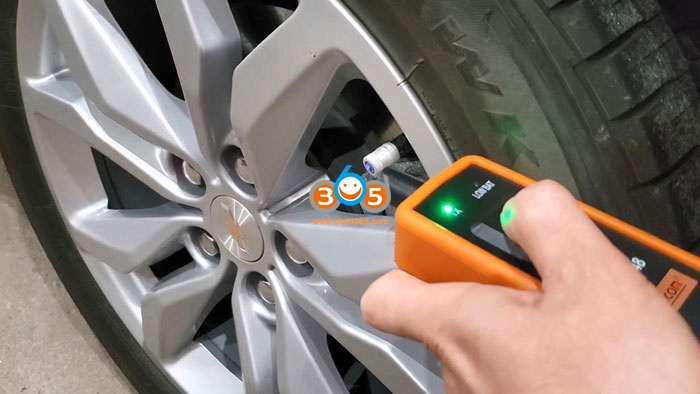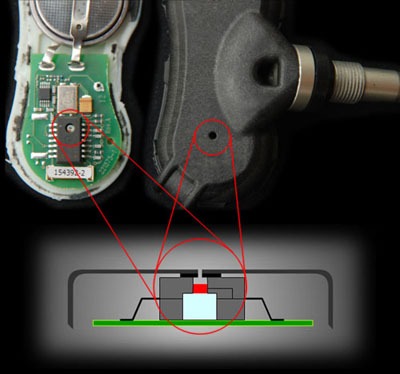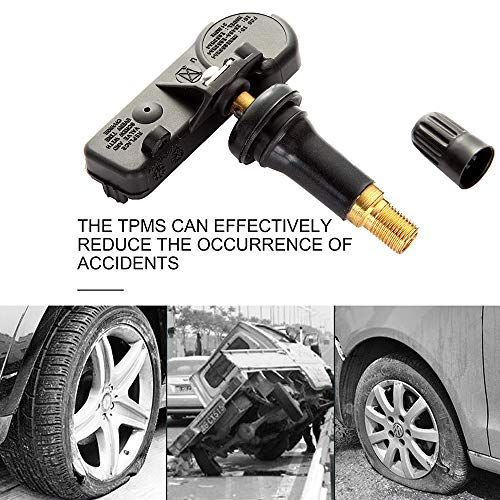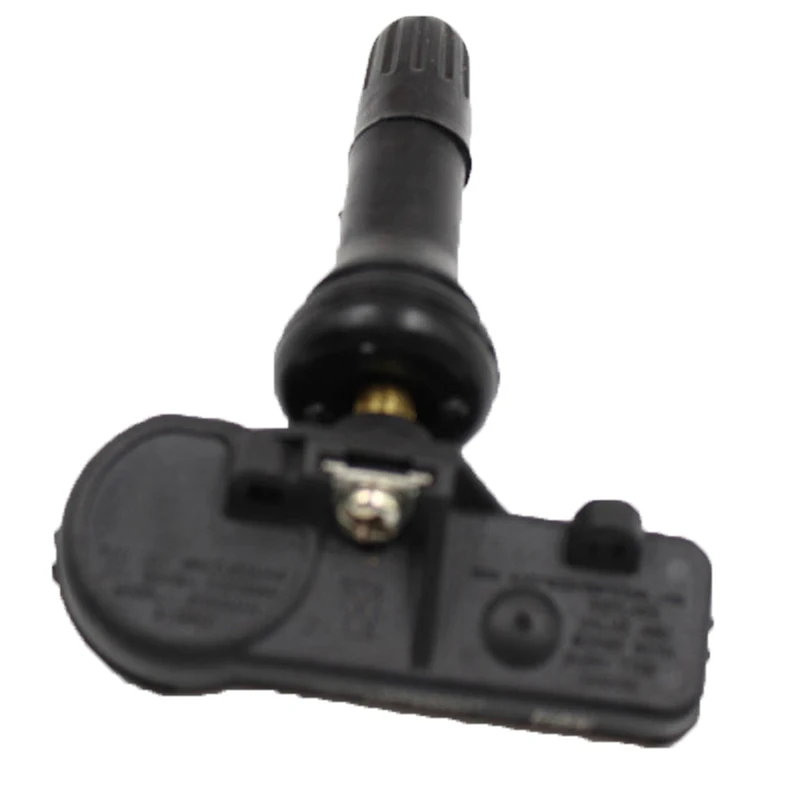Vehicle Freak
Chevy cars are known for their advanced features and sturdy frame. One of the features that offer convenience to the driver on a Chevy is the tire pressure monitoring system. With the system, drivers get an indicator light on the dashboard that lights up whenever there is an anomaly on the tire pressure system.
When the TPMS indicator light lights up on the dashboard of a Chevy, it could be due to one of the following reasons:
It is recommended that you check the pressure in your tires as soon as you notice the TPMS indicator lighting up. Riding with uneven pressure in the tires is dangerous and causes instability in the car.
Ideally, soon after inflating all the tires to the recommended PSI amount in the manufacturer’s manual, the TPMS system should monitor the new pressure across all tires and turn the dashboard light off. In case you still have the indicator light on your dashboard, however, a simple procedure that only takes a few minutes can reset the TPMS and turn the light off.
The procedure described below works for the Chevy Malibu Models that were manufactured between the years 2008 and 2011. As such, it may or may not work for later models.
 Take care not to go overboard and turn it to the run position, which causes the car to start. With your car keys in the ON position, the dashboard lights should be lit
Take care not to go overboard and turn it to the run position, which causes the car to start. With your car keys in the ON position, the dashboard lights should be lit
Here is a video tutorial on how to accomplish this as well:
Read through some of these articles on resetting TPMS:
What Does Battery Saver Active Mean On A Chevy Malibu?
Chevy Malibu – How to Open The Gas Tank and Cap
Is Your Chevy Truck Losing Power When Accelerating? Here Are Some Possible Causes and Solutions
by Jennifer S.
Is your Chevy Malibu Tire Pressure Management System (TPMS) Warning light on? Use these tips to reset it.
The light indicator is a notification to warn you of significantly low air pressure or high-pressure loss in your tires and is NOT to be ignored, as low pressure affects the vehicles overall performance such as:
To Check the Recommended Air Levels Needed:
To Reprogram the system, and clear the Warning Light, follow 1 of these Options:
Contents

TIP: If you let the air out of a tire and hear 3 BEEPS that is notifying you that the reprogramming is COMPLETE and now you can add or release air to the proper levels if needed.
Lastly, via the MENU you can check to make sure ALL tires are filled to the recommended PSI levels, OR, you can check with a TIRE GAUGE. If any tire reads lower, you can add more air, or higher, remove some.
NOTE: If you are unable to Reprogram the Tire Pressure System on the first try, repeat the steps. If you are still unsuccessful, contact the dealership for assistance or consult your vehicle user’s manual.

TIP: If you let the air out of a tire and hear 3 BEEPS that is notifying you that the reset is COMPLETE and now you can add or release air to the proper levels if needed.
Lastly, via the MENU, then TIRE PRESSURE you can check to make sure ALL tires are filled to the recommended PSI levels OR, you can check with a TIRE GAUGE. If any tire reads lower, you can add more air, or higher, remove some.
NOTE: If you are unable to Reprogram the Tire Pressure System on the first try, repeat the steps. If you are still unsuccessful, contact the dealership for assistance or consult your vehicle user’s manual.
Save article:
The article says:
When the tires are optimally inflated, the low tire pressure indicator (TPMS) does not light up on the vehicle's dashboard. However, in some cases, it lights up even if the pressure is normal. This can't help but be annoying, especially when the tires are inflated normally. In our article today, we will figure out how to reset a tire pressure error.
However, in some cases, it lights up even if the pressure is normal. This can't help but be annoying, especially when the tires are inflated normally. In our article today, we will figure out how to reset a tire pressure error.
American and European scientists conducted a study, during which it was found that most drivers do not check whether the wheels are properly inflated before getting behind the wheel of a car. Only 40% of car owners perform such a check - and even then only once every 12 months. This is the reason for a large number of accidents.
The TPMS (Tyre pressure monitoring system) system is designed to monitor tire pressure, as well as warn of a malfunction. If the tires are under-inflated or over-inflated, an error will be displayed on the remote control or an audible signal will appear.
What is dangerous too high or, conversely, low pressure? The risk of an accident increases, the car begins to consume more fuel, in addition, the rubber wears out faster.
Photo: Shutterstock
The above devices operate on the same principle. Let's figure out how information about what tire pressure gets to the control panel.
 2 bar.
2 bar. Consider how pressure is calculated by measuring instruments. Typically, the sensor performs a comparison of the angular rotation of the wheel. Knowing the value of this parameter, you can calculate the distance that the wheel will travel in one rotation.
Obviously, if the tires are under-inflated or over-inflated, then the outer diameter of the wheel will be different. Visually, a person cannot determine this change. But the sensor notices even such changes. The system fixes non-compliance with the required parameters.
The sensor will still respond, despite the fact that the wheel circumference has changed quite a bit. In this situation, it is necessary to find out what mechanical reason led to this. Only in this way can you eliminate the misinterpretation of the signals transmitted by the system. This can happen because:

Also, the TPMS system gives an error when you install new wheels or rearrange them.
When, after these steps, a tire pressure error appeared, indicating unbalance, you should reset the settings, and then set the basic parameters. In this case, the control signal may remain even if the basic settings have been selected.
Why such problems may occur:

See also
Velcro or spikes: which rubber is better for the Russian winter?
Read more
How to reset tire pressure error? To begin with, imagine that the TPMS system is working properly and the blinking light indicates a problem with the undercarriage of the machine. The first thing you should do is slowly release the gas. You can not brake sharply, turn the steering wheel. After the car has stopped, inspect the tires to make sure the rubber is not punctured or broken. Then you can check if the tire pressure is normal.
Then you can check if the tire pressure is normal.
Pay attention! The TPMS will not always show a tire pressure error. For example, if the tires are slowly deflating, the system will not inform you about the problem. In the same way, she will not notice the error if the tire pressure starts to drop rapidly. This usually happens when a tire ruptures. This feature of the TPMS system is explained by the specifics of identifying and counting nonconformities.
However, in some cases, it happens that the TPMS system indicator is on, but the tires are in perfect condition. How to reset tire pressure error? We understand.
The complex TPMS system in some cases starts to work incorrectly. Usually, car owners observe the following picture: a tire pressure error is displayed on the display (the tire is underinflated), but in reality everything is fine with the wheel. You have to reset the tire pressure error. Otherwise, the TPMS system starts to work incorrectly.
Otherwise, the TPMS system starts to work incorrectly.
Photo: Shutterstock
You also have to reset the tire pressure error when there is radio interference from high voltage power lines. Or when sources of radio signals are located in the immediate vicinity. But as soon as you move away from them, the pressure error disappears and the system begins to function properly.
The reason for the malfunction may lie in the sensor, which is "failed". This damage cannot be easily repaired. How to reset a tire pressure error if the sensor flashes, while you hear a beep, lose your vigilance and find it difficult to drive a car? There are 4 ways to fix this problem.
To reset the error, pick up a speed of 80 km / h and continue driving for another 15 kilometers.
This method is the easiest to implement. If your car has this feature, then turn on the cruise control so that the speed does not change. Depending on the model of your car, you will be able to reset the tire pressure error at a speed that exceeds the specified one. After you cover a distance of 15-20 kilometers, maintaining the same speed of 80 km / h, make a stop. Turn off the motor. When you start it again, the tire pressure error will disappear.
After you cover a distance of 15-20 kilometers, maintaining the same speed of 80 km / h, make a stop. Turn off the motor. When you start it again, the tire pressure error will disappear.
Popular articles
How much do they pay for advertising on a car
11/25/2022
37
Best car tool kit
11/18/2022
118
What is in my name to you, or How to decipher the marking of engine oil
11/17/2022
99
How to clean car seats
11/15/2022
82
How to choose a child car seat
31. 10.2022
10.2022
376
Press the tire pressure monitoring system (TPMS) reset button on your car and you will be able to reset the error.
It does not matter what type of low pressure warning system is used. In any case, there will be a sensor on each wheel of your car. Sometimes it may be necessary to reboot the touch system of the car. Read the owner's manual for the vehicle. It contains information on how to reset a tire pressure error. Most often, the instructions indicate which button to press to reset.
The ignition key must be in the lock. No need to start the car, just turn it to the “on” (“ON”) position. Then press and hold the reset button, which may be under the steering wheel. We are waiting for the low pressure indicator to flash 3 times. After that, you can release the button. We start the car, it should work for 20 minutes. After this time, the computer will calibrate the sensors on the wheels. Now you can turn off the car.
Now you can turn off the car.
Read also
""
Read more
Lower and then re-inflate the wheels.
Failed to reset tire pressure error using the previous method? Then we inflate all tires to 0.2 bar, this is the pressure that should be according to the recommendations of car manufacturers. Did the error go away? Then we lower the pressure in the tires completely.
Now we pump up the wheels again. The pressure in them should be the same as indicated on the driver's door pillar or in the car's operating instructions. When there are sensors on the wheels, you need to remember about the spare tire. Now you need to drive about 3-5 kilometers, adhering to a speed of 25 km per hour. So you can reset the tire pressure error.
Remove the battery terminals and then connect it to reset the error.
Each car has a computer that receives data from all kinds of vehicle sensors, including TPMS system sensors. However, any electronics can fail. To reset the error, you will have to reboot the system, for which you need to turn off the power.
Photo: Shutterstock
To do this, open the hood. The battery is located under the hood. Disconnect the negative terminal from it. To perform this operation, use a wrench. Then sit in the driver's seat, turn the key to the "ON" position, but do not start the car. Now you need to press the signal for 3 seconds. This will use up the energy that remains in the electrical system of the machine. Then reconnect the battery. This way you can reset the error.
Sensors keep track of tire pressure. However, you need to be sure that they function properly. Of course, you do not need to constantly walk around with a special measuring device and find out the status of the sensors. It just needs to be calibrated from time to time.
It just needs to be calibrated from time to time.
It is performed quite simply. The most important thing to remember is that, depending on the make and model of your car, for each wheel there are pressure parameters strictly defined by the manufacturer for winter and summer. These values should be given to the sensors. How the installation and configuration will be performed depends on the controller used.
 Otherwise, you will have to rearrange them so that everything matches the parameters on the display.
Otherwise, you will have to rearrange them so that everything matches the parameters on the display. For current promotions on the Halva card, which will help you profitably purchase household appliances, you can follow here.
To prevent a tire pressure error from appearing, it is important to calibrate (adjust the TPMS system) every time a change is made. For example, when you installed a new set of wheels, repaired tires, did balancing, and the like. Using TPMS controllers is quite simple. The main thing is to read the instructions for use of the device. And make sure that the tire pressure is the one recommended by the car manufacturer.
See also
"What tires can be put on rims 14, 15 and 16: professional advice"
Read more
Every car owner gets annoyed if the tire pressure error icon lights up on the dashboard. This indicator informs you that something is wrong with the wheels. However, even if the tire pressure is optimal, the tire pressure error must be reset.
The fact is that if the TPMS system icon constantly signals insufficient pressure, the driver will not be able to know when the rubber will actually begin to deflate. Driving becomes dangerous for both you and other road users. It is necessary to find out the cause of the malfunction as soon as possible and reset the tire pressure error. This is the only way to operate the vehicle safely.
You are the proud owner of a recent car, the joy of tactile gadgets, integrated technology should bring you the convenience of using your Chevrolet Malibu, which is important because technology talks about electronic, and as we all unfortunately often know, there are often violations to allow . Today we will focus on the tire pressure sensor and specifically on the tire pressure sensor. how to reset the tire pressure sensor on a Chevrolet Malibu so that you no longer have this indicator on the dashboard. To do this, we will divide our article into two parts: first we will focus on the general case of the tire pressure indicator light and the subsequent procedure, and then on the case when the tire pressure indicator remains on even when inflated. tires, so how to reset this tire sensor on a chevrolet malibu.
Today we will focus on the tire pressure sensor and specifically on the tire pressure sensor. how to reset the tire pressure sensor on a Chevrolet Malibu so that you no longer have this indicator on the dashboard. To do this, we will divide our article into two parts: first we will focus on the general case of the tire pressure indicator light and the subsequent procedure, and then on the case when the tire pressure indicator remains on even when inflated. tires, so how to reset this tire sensor on a chevrolet malibu.
First, we will look at the common way to reset the tire sensor on a Chevrolet Malibu, which if it lights up, here are the basic simple steps:

Now that you have completed the basic procedure for removing the tire pressure sensor on the Chevrolet Malibu, and it didn't work, we'll move on to the second solution, which is, the tires on my Chevy Malibu are well inflated and I still want that light to go away. This probably shows that you have Faulty tire pressure sensor. This will require to reset the value on your car's dashboard. However, be careful not to do this while driving as pressure fluctuations will affect your pressure sensors. In most cases you need to go through the car settings then you should find an option to detect inflation or "detect deflation" once in this tab you should hold the select or reset button depending on the year of your Chevrolet Malibu until you see the message on the car console confirming that the reset is taken into account (usually takes a few seconds). You can now turn off the ignition and restart your Chevrolet Malibu to see if the tire pressure light has gone out.
This probably shows that you have Faulty tire pressure sensor. This will require to reset the value on your car's dashboard. However, be careful not to do this while driving as pressure fluctuations will affect your pressure sensors. In most cases you need to go through the car settings then you should find an option to detect inflation or "detect deflation" once in this tab you should hold the select or reset button depending on the year of your Chevrolet Malibu until you see the message on the car console confirming that the reset is taken into account (usually takes a few seconds). You can now turn off the ignition and restart your Chevrolet Malibu to see if the tire pressure light has gone out.
